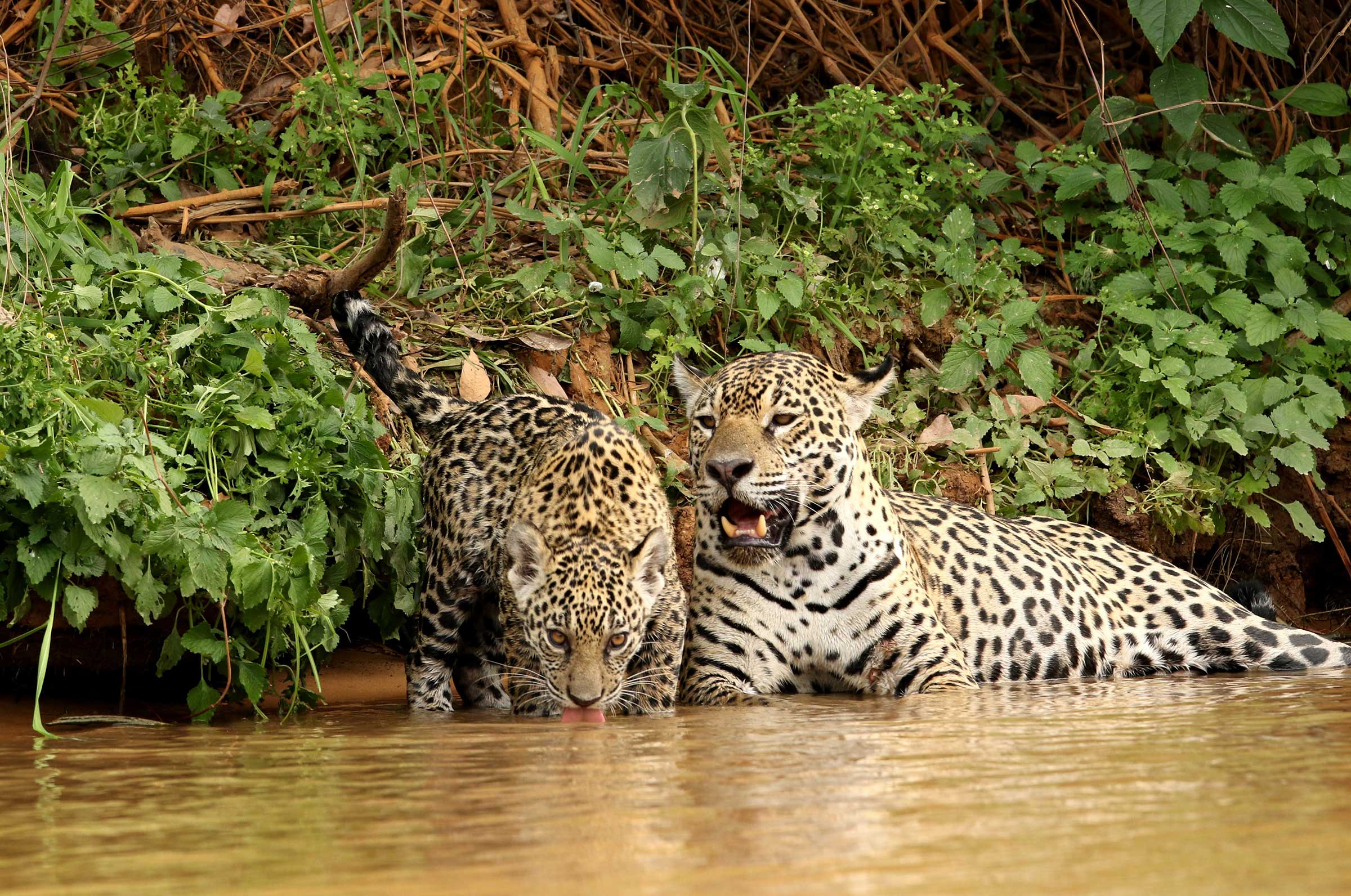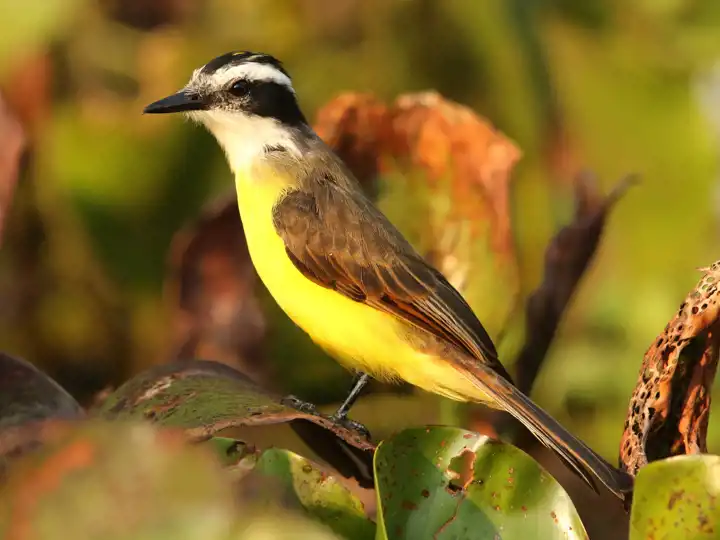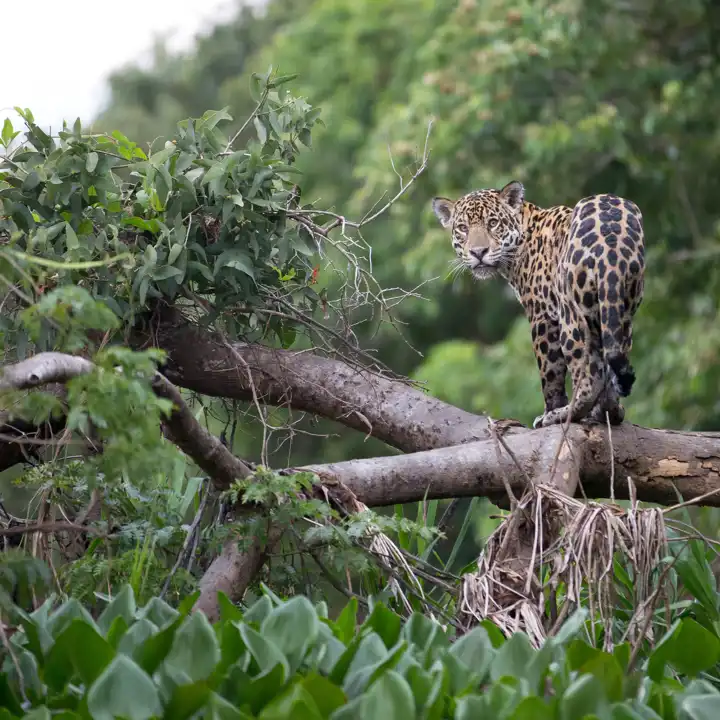Pantanal Unveiled: Brazil's Best-Kept Wildlife Secret
As Seen in QUEST Magazine
By Haley Beham
It was a sweltering summer in Texas.
By mid-September, San Antonio had broken a record for the most days over 100-degrees Fahrenheit in one year: 74. Usually, people in Texas head north to places like Colorado and Montana for the summer to escape the heat. But I was heading south, just days after San Antonio saw its last triple-digit day. In the weeks leading up to my trip to Brazil, I checked the weather app incessantly and watched as the temperature climbed to well-over 100-degrees. I braced myself for more hot, humid days that would be spent outside as I packed my bags.
My dad and I exchanged a few text messages about what camera equipment we would be taking and how light we could practically pack. This would be our third father-daughter trip together. In college, he met me in Italy while I was studying abroad, and we traveled around Tuscany and found our favorite pizza joint. Then a few years ago, we traveled to West Texas together on a long weekend. Not to mention all the family trips to Botswana, Zimbabwe, and Egypt. But this time we were heading to Brazil’s Pantanal to photograph jaguars on the Cuiabá riverbanks, just the two of us.
Triple-digit temperatures be damned! It was prime viewing season for jaguars in Brazil’s Pantanal.
While almost everyone has heard about the Amazon, not many know of the Pantanal in Brazil. This jewel of a destination has flown under the radar for years.

Located in the upper Paraguay River basin, most of the Pantanal lies within Brazil’s borders; however, it extends into Bolivia and Paraguay as well. At 68,000 square miles, the Pantanal is the world’s largest freshwater wetlands. Yes, it’s bigger than Botswana’s Okavango Delta. And similar to the Okavango Delta, it floods each year during the rainy season creating a vast flooded landscape with a proliferation of fish. As the water begins to recede, it creates pools of water filled with aquatic life, which then attract various species of birds such as egrets and storks. And while the Amazon often overshadows the Pantanal, the Pantanal has the highest concentration of wildlife in South America. More than 650 species of birds and 270 species of fish can be found there.
But its many fish and bird species aren’t the only animals drawn to this flooded savanna. While giant river otters, marsh deer, and tapirs can be found along the waterways searching for food, jaguars are undoubtedly the star of the show.
Tourism in the Pantanal to see the jaguars is relatively new. Up until about 15 years ago, you wouldn’t see jaguars on the riverbanks. But after decades of motorboat traffic from the fishermen, the jaguars have slowly become habituated to boats on the river. And while the male jaguars are still a bit shy, female jaguars are often seen with their cubs walking along the banks of the river.

For our best shot at seeing and photographing jaguars, my dad and I headed down to Porto Jofre, located in southern Brazil along the Cuiabá River. To get there, you can either fly from Cuiabá on a 45-minute chartered flight or buckle up for a bumpy five-hour drive along the Transpantaneira Road, a mostly dirt road with more than 120 bridge crossings. The drive promises some nice wildlife spotting opportunities of tapirs, marsh deer, caiman, capybara, and coati, while the flight transfer offers those epic aerial views.
We arrived in Porto Jofre in the late afternoon and settled into our accommodations to ready our gear for the next day’s adventure.
The following day, after a quick breakfast, we boarded our boat and departed with our guide and driver just after first light. We cruised the river for thirty minutes before reaching the Pantanal Matogrossense National Park, each minute building our anticipation for a potential jaguar sighting. As we cruised along the river, my eyes constantly scanned the riverbanks, sweeping back and forth for the tiniest movement or change in pattern. Not too long after reaching the national park, we were rewarded with our first sighting—a female jaguar swimming in the river.
We soon found that jaguar sightings in the Pantanal are similar to Mara River crossings in Kenya. Guides are on the radio, talking with each other, sharing sighting locations with others. Soon, several boats arrived to see the jaguar, with each boat driver jockeying for the best position so that their guests could get the quintessential shot of the jaguar on camera.
After several minutes of speeding up to get to the front of the pack, then waiting as others moved around us, we left to find another sighting.

It didn’t take long until we found a mother and cub walking in and out of the trees along the riverbank, periodically coming down to the river to a shady spot for a rest. At one point, the mother laid down, and the cub, eager for the mother’s attention, went over to her and nuzzled its head against hers. The sweet moment soon turned into a funny one as the mother, who—like so many weary mothers of toddlers—just wanted a moment alone. She allowed a mere second of affection before turning away.
Later that afternoon, we found a pair of brothers lying in a shady spot under trees right at the water's edge. Every now and then, one would pick up his head and glance around, but they never got up from their cool spot.
In total, we saw six jaguars on our first day.

The next morning, we had an early wake up call for an hour-long cruise through the Cuiabá River’s tributaries in search of giant river otters.
Giant river otters are social and live in a family unit. They can grow five to six feet in length and weigh up to 70 pounds. In my head, I pictured a cute, furry animal. But giant river otters have sharp teeth and webbed feet and when they are eating a fish (or rather, ripping it to shreds), they look quite ferocious.
Once we found the family, we watched as they swam and played, hunted for fish, and ate. Contrasted to our experience with twenty-plus boats at one jaguar sighting from the previous day, we were the only boat watching the giant river otters that morning.
Later, we left the otters in search of more jaguars. Just inside the park boundaries, we found a female stalking a caiman in the water. We followed slowly, watched, and kept our cameras fixed on her, waiting for her to make a pounce. She crossed the river and weaved through the vegetation. It was a slow, steady stalk. We stayed with her for about two hours and covered about half a mile.
After a few unsuccessful attempts to catch the caiman, we called it a morning and went back to camp. But it left me wondering if the boats, some of which got quite close to her, impeded her ability to catch a caiman.

Over the next several years, jaguar tourism will change a lot. We’ll start to see more upscale hotel options open, more infrastructure put in place, and—ideally—even more conservation efforts adopted to protect this incredible ecosystem.
For this father-daughter duo, seeing jaguars in the wild was a truly incredible experience and one we will keep with us forever.
- The rainy season is from November to March. The dry season—and best time to view jaguars—is from June to September, with May and October as a shoulder season to the dry season.
- You will most likely need to overnight in São Paulo ahead of a Pantanal safari. Fortunately, major hubs like Houston and Atlanta offer easy direct flights to São Paulo.
- Take advantage of the lack of jet lag. Porto Jofre is located in a similar time zone as the United States, so you’ll hardly notice a difference in time zones. Less time adjusting to time changes = more time for exploring.
- Yellow fever vaccines are recommended but not required when visiting the Pantanal and Amazon.
- Follow Ker & Downey's Pantanal packing guide, including the photography equipment that Haley and David took on their trip.

Pantanal Jaguar Safari
From north to south, Ker & Downey traverses the full breadth of the Pantanal on this 10-day Pantanal safari in search of the region’s resident jaguars. A Brazil jaguar safari through the Pantanal reveals a lush, megadiverse biome sheltering the largest concentration of wildlife in the Americas.
Itinerary-at-a-glance:
- Day 1: Arrive São Paulo
- Day 2 - 3: North Pantanal
- Day 4 - 6: Porto Jofre
- Day 7 - 9: South Pantanal
- Day 10: Departure

Quest Magazine
Dedicated to the experiential style of Ker & Downey travel, QUEST Magazine features eye-opening content that focuses on unforgettable experience, unheard-of destinations, and the very best our world has to offer. Each issue is packed with insider information, what's new in the world of travel, and editorial pieces that focus on our global culture, philanthropy, and transformative travel.
Read The Family Issue